Review for Sweet Blue Flowers - Complete Series
Introduction
Alternate life choices and lifestyles don’t really get a serious and honest examination in anime. It’s always about the target audience, and for some reason the stories about two men in a romantic relationship will be targeted at squealing fangirls, who want a degree of predictability and safety in such portrayals, where the hardest question to be answered is which is uke, and which is seme. On the other hand, lesbian characters in anime are always targeted at the male otaku audience, who have their own equivalent of the fangirl squee to emit. These yuri and BL genres are niches within niches, made for a very specific mindset. In mainstream anime, gay portrayals are confined to the camp butch stereotype that provides comic relief in action anime. Think Fire Emblem in Tiger & Bunny, a cross between Frank Bruno and Larry Grayson, and you get the feeling that the anime industry has a long way to go before it accurately echoes the real world, when it comes to the rich variety in human relationships.
But there are honest and genuine portrayals of alternate lifestyles in anime, and indeed they are just as prevalent as such portrayals in Western media, i.e. not very. You just have to look harder to find them, and once in a while you can find a gem. The last few years saw two such titles streamed to the world on Crunchyroll, both of them from the pen of Takako Shimura. Wandering Son was a very touching and heartfelt tale about a young schoolboy who likes to cross-dress, trying to find his place in the world. Unfortunately that amazing show is still lacking a licence for home video release in the West, but the other Takako Shimura show did get a release from Right Stuf on the Lucky Penny label. It’s a tale about the complexities of first love in two neighbouring girls’ schools, and the renewal of a childhood friendship. It was released originally as Aoi Hana for streaming, but Lucky Penny translated the title to Sweet Blue Flowers for its DVD release.
As a child, Fumi Manjome was prone to tears, but she could always rely on her best friend Akira ‘Achan’ Okudaira to provide a shoulder to cry on. Now that she’s of high school age, her family have returned to Kamakura where she grew up, where she can attend the Matsuoka Secondary School for girls. It’s an inauspicious return as she’s just had her heart broken. When she bumps into Achan again, who’s ready with a timely handkerchief, the years apart just melt away, and the two soon rekindle their friendship. Achan attends the nearby Fujigaya Girls Academy and the two schools are practically next door to each other. When the Fujigaya Drama Club decides to put on a performance of Wuthering Heights, they call on the Matsuoka Drama Club for help, not least because Matsuoka student Yasuko Sugimoto is the perfect Heathcliff. That’s a fact that isn’t lost on Fumi, who is already falling head over heels for Yasuko, and is having a hard time balancing her romance with her friendship. The thing is that Yasuko used to go to Fujigaya, and there’s a reason why she left. Fumi’s life is about to get more complicated.
Eleven episodes of Sweet Blue Flowers are presented across three discs from Lucky Penny.
Disc 1
1. A Flower’s Tale
2. Springtime’s Storm
3. When I Wake in the Morning
4. Youth is Beautiful
Disc 2
5. Wuthering Heights (Part 1)
6. Wuthering Heights (Part 2)
7. When the New Leaves Grow
8. Love is Blind
Disc 3
9. A Midsummer Night’s Dream
10. The Prince of Happiness
11. Winter’s Fireworks
Picture
Sweet Blue Flowers gets a nice progressive NTSC transfer at the 1.78:1 anamorphic aspect ratio across three dual layer discs. The image transfer quality is excellent on these discs, with the image coming across as clear and sharp throughout, with good and consistent colour rendition. There is an absence of visible compression artefacts, and aliasing and interlacing issues are equally as negligible. It’s a good, solid transfer that leaves nothing to complain about.
That’s all for the best as Sweet Blue Flowers is a very pretty show, with soft and gentle character designs, and with detailed but stylised backgrounds. The show adopts a soft, watercolour and pastel palette that suits its tale of first love and tentative romance very well. It isn’t an overly animated show, but it does capture its characters very well, with subtle touches of animation here and there. The only way that Sweet Blue Flowers could look better is in HD. Alas Crunchyroll have removed their streams, so the only way to watch this show legally in the West is through these DVDs, and indeed after an initial DVD only release in Japan, it’s only now getting the Blu-ray treatment there too.
Sound
This is a subtitle only release, so the sole audio track is a robust DD 2.0 Japanese track. The translated subtitles are optional. This isn’t an audio intensive show, but the stereo does enough to give the show a bit of space, and there is a bit of sound design to be appreciated when it comes to locations and ambience. The music is subtle, but supports the story well, while the show’s theme songs are very apropos. The dialogue is clear throughout, and the discs are absent any dropouts or glitches.
Extras
Lucky Penny is Right Stuf’s budget label, so I shouldn’t begrudge the packaging, but the litebox which holds one disc at the front and two overlapping at the back is a nightmare for getting the discs out. I love the disc labels for this show, as it makes them look like blue line art on fine china.
Each disc autoplays with an advert for Rightstuf.com, they present their content with static menus, and across the discs you’ll find trailers for Ristorante Paradiso, Maria Watches Over Us Season 1, Emma Season 1, Antique Bakery, Sound of the Sky, Revolutionary Girl Utena: Student Council Saga, His and Her Circumstances, Junjo Romantica Season 1, and Gravitation the TV Series.
On disc 3, you’ll also find 3 minutes worth of TV spots for the show, the clean opening, the US trailer, and 17 colour images in a character art gallery.
Each disc ends in a translated English language credit scroll, useful as the episodes maintain the original Japanese credit sequences.
Conclusion
Sweet Blue Flowers is a gentle and heart-warming story, a tale of first loves and broken hearts, as well as close friendships, bolstered by a wryly observed character study. That it has such beautiful animation and such sympathetic performances from the actors makes it all even better. It is however just a tad misleading if you build your expectations based on the catchy opening sequence.
That opening sequence set to Aoi Hana by Kukikodan features the two main characters Fumi and Akira, and the imagery strongly implies that they will be the central romantic pairing in the story. That isn’t the case in these eleven episodes, although the story does focus on them rekindling their childhood friendship. Ten years previously, they were best friends, and with Fumi prone to tears, Akira’s was the most supportive shoulder around to cry on. They are reunited after ten years, and the story follows them as they renew their friendship, and Akira winds up being supportive of her best friend once more.
Fumi needs the support, as this is the point in her life where she’s beginning to connect emotionally to people, and as so often happens, it’s a faltering and tentative process. It isn’t helped by the realisation that she’s attracted to other girls, which adds another layer of consternation to difficult situations. Unlike shows like Gravitation, which exist in a magical world where differing sexualities only raise eyebrows when the story requires it, Sweet Blue Flowers at least has its characters aware that who they are may engender difficulties in society, whether from without, or from close family. It’s never a central issue in the show, that isn’t the point of the story, but at least it isn’t simply ignored.
It also makes things a little easier in terms of plausibility by setting its story in two exclusively girls’ schools, where romantic feelings can become confused with intense but platonic crushes on elegant upperclassmen, and where emotional attraction is far more relevant than sexual attraction. That the object of Fumi’s affection in these episodes, Yasuko Sugimoto is herself tall, elegant and boyish explains the attention she gets from other girls in both schools.
Sweet Blue Flowers is all about girls at that age where they’re finding themselves, making connections, falling in love, and having their hearts broken. Fumi suffers a broken heart at the start of the series, when she moves to Kamakura, and someone she thought she was in love with ‘betrays’ her by getting married. She’s in a vulnerable spot when she starts school, and she’s quick to warm to Yasuko when it becomes clear that the attraction is mutual. The thing is that Yasuko’s situation is even more stressed, as she too is coming off a heartbreak, while she has unwelcome attention from an ardent admirer. There’s an element of acting out, when she starts going out with Fumi, and as the story unfolds it becomes apparent that with typical teenage self-centredness on all sides, Fumi is liable to be hurt once more.
Through it all, Akira is the rock that Fumi can rely on. They quickly renew their friendship in the most poignant way, and Akira becomes the reliable best friend, shoulder to cry on when required, mediator when people aren’t communicating, and staunch defender when lines are crossed and Fumi is hurt. She also has to keep her counsel when Fumi has to resolve matters for herself. It isn’t an easy road to navigate, especially when Fumi feels she has to choose between her friend and her love, but the delight in this show is watching the characters interact.
However, I do feel that the show does err on the side of lightness and soft cushions when it comes to character drama and hurt feelings. While the narrative speaks of painful heartbreaks and forlorn hopes, the way that it’s presented softens the impact and lessens the apparent hurt. It’s as if the show’s fairy tale art design and watercolour imagery demands that no one should raise their voices, that pain should be expressed only through silent tears and that such feelings are ephemeral at any rate. In the end it is really Fumi’s journey of self-realisation, and given that opening sequence, it doesn’t come as a surprise at just what that realisation is. The problem is that there’s no follow up, the series ends at this point, and it becomes clear that it’s really just a prelude, or rather a prologue to a larger story.
Sweet Blue Flowers is interesting enough, and certainly very enjoyable to watch, but it leaves a few too many questions, and the sneaking suspicion that the better part of the story, the more interesting part is yet to be told. Alas, given how such niche anime perform even in their native Japan, that story will probably remain within the pages of the manga.
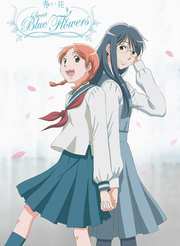
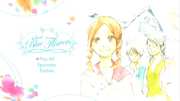



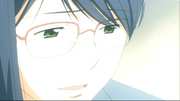
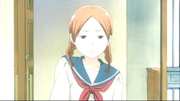

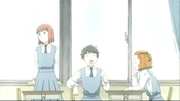








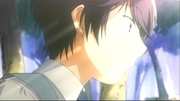







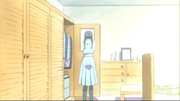

















































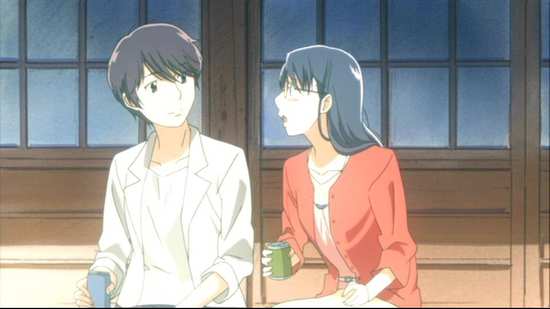



Your Opinions and Comments
Be the first to post a comment!